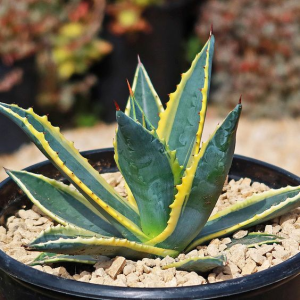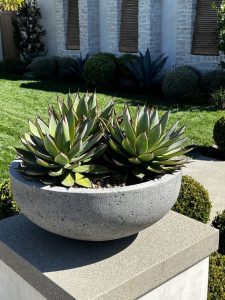- English
- Chinese
- French
- German
- Portuguese
- Spanish
- Russian
- Japanese
- Korean
- Arabic
- Irish
- Greek
- Turkish
- Italian
- Danish
- Romanian
- Indonesian
- Czech
- Afrikaans
- Swedish
- Polish
- Basque
- Catalan
- Esperanto
- Hindi
- Lao
- Albanian
- Amharic
- Armenian
- Azerbaijani
- Belarusian
- Bengali
- Bosnian
- Bulgarian
- Cebuano
- Corsican
- Croatian
- Dutch
- Estonian
- Filipino
- Finnish
- Frisian
- Galician
- Georgian
- Gujarati
- Haitian
- Hausa
- Hawaiian
- Hebrew
- Hmong
- Hungarian
- Icelandic
- Igbo
- Javanese
- Kannada
- Kazakh
- Khmer
- Kurdish
- Kyrgyz
- Latin
- Latvian
- Lithuanian
- Luxembou..
- Macedonian
- Malagasy
- Malay
- Malayalam
- Maltese
- Maori
- Marathi
- Mongolian
- Burmese
- Nepali
- Norwegian
- Pashto
- Persian
- Punjabi
- Serbian
- Sesotho
- Sinhala
- Slovak
- Slovenian
- Somali
- Samoan
- Scots Gaelic
- Shona
- Sindhi
- Sundanese
- Swahili
- Tajik
- Tamil
- Telugu
- Thai
- Ukrainian
- Urdu
- Uzbek
- Vietnamese
- Welsh
- Xhosa
- Yiddish
- Yoruba
- Zulu
- Kinyarwanda
- Tatar
- Oriya
- Turkmen
- Uyghur

Wokangana ndi wokhala ndi chilengedwe ndi ndalama zofunikira agave. Plant development and management take great attention on its pace of expansion. Many elements influence agave’s pace of growth: environmental conditions, type of soil, water availability, light, and farming practices.

Kukula kwa Agave
Agave’s typical extended development cycle consists of many basic phases:
Kuyambira ndi kumera kwa mbewu, mbande za Agave zidzakula msanga m'malo oyenera. Mtundu wa mbewu ndi malo ozungulira amazindikira kuti kumera kumatenga nthawi yayitali bwanji - miyezi yambiri mpaka chaka chimodzi. Mbandeyo imapanga tsamba la tsamba loyambirira pa siteji iyi, lomwe lidzapereka maziko owonjezera kukula kwina.
Nthawi zambiri zimakhala zaka zingapo, iyi ndiye gawo lalikulu la chitukuko cha Agave. Chomera chimapitilira kukula masamba ake ndikupanga maluwa owoneka bwino pa tsamba lino. Zinthu zachilengedwe ngati kuwala, madzi, ndi kutentha kumathandizira nthawi ndi kuthamanga kwa chitukuko pakukula kwa gawo. Agave amatha kukula kutalika kwake ndi 10-20 masenti chaka chilichonse pachaka pamakhalidwe abwino; M'malo oipa, liwiro limatha kuchepa kwambiri.
Agave nthawi zambiri amatenga zaka zambiri kuti akwaniritse gawo lokhwima, zaka zopitilira 10. Gawoli ndi lomaliza la kukula kwa mbewu. Nthawi zambiri amalowetsa misnescence siteriji ndipo pang'onopang'ono akufa pambuyo pophuka, agalu okhwima adzayamba kupanga maluwa. Nthawi zambiri kuwonetsa kutha kwa moyo, kutuluka kwa mivi wamaluwa ndi njira yophukira zimakhudza kwambiri kukula kwa mbewu.
Calculating the agave’s growth rate
Agave’s growth rate varies according on the type and surroundings. Generally speaking, agave leaves develop somewhat slowly. Agave leaves could grow 10–20 cm annually under appropriate growth circumstances. varying agave cultivars do, however, have somewhat varying rates of growth. As a result:
Nthawi zambiri akuwonetsa kuchuluka kwa kukula kwa Quicker, Guve America Agave Americana ndi njira yotchuka popanga mawonekedwe chifukwa cha kuchuluka kwake mwachangu.
Cholembera choyambirira cha tequila, agave tequilailana (buluu agave) amakula pang'onopang'ono. Nthawi zambiri, kukhwima kwamalonda kumabwera patatha zaka zisanu ndi ziwiri mpaka khumi. Kuthamanga pang'onopang'ono kwa chitukuko kumapangitsa kuti izi zisonkhanitse ma shuga, zoyenera kupanga tequila wabwino kwambiri.
Agave Filifera: Mtundu wotsika mtengo wa masamba amakula pang'onopang'ono. Nthawi zambiri amakhala oyenerera dothi louma komanso losalala, limawonetsanso kusintha kwakukulu kwa chilengedwe.
elements influencing agave’s development pace
Many elements influence the agave’s growth rate: environmental conditions, type of soil, water availability, light conditions and farming technique.
Mikhalidwe ya chilengedwe
Usually suited to tropical and subtropical conditions, agave is a drought-tolerant plant. The range of optimal growing temperature is 20–30°C. Agave’s growth rate will be much slowed down in cold climes below this temperature range, and it may even lead to plant frostbite. Furthermore influencing the plant’s development are too high or low temperatures, therefore it is essential to make sure the temperature falls within the suitable range.
Agave can survive in dry conditions, although little dampness promotes plant development. Under a long-term drought, agave’s growth rate could slow down and the plant might even stagnate. A moderate humidity may boost plant development rate and help them to flourish normally.
Agave amatengera kuwala kokwanira kwa photosynthesis ndi chitukuko chabwino. Mitundu yambiri ya Agave ndi yoyenera kukula pansi pa dzuwa. Kuwala kosakwanira kumachepetsa chitukuko cha chomera ndikupangitsa mtundu wa tsamba kukhala wotumphuka, motero kunyalanyaza zomera zonse.
Mtundu wa nthaka
Agave amafunikira ngalande yayikulu kuchokera ku dothi. Kukhazikika kwa mbewu kumadalira nthaka yachonde, yothira pansi. Madzi ophatikizika mu dongo kapena dothi amatha kutsogoza mizu yowotchera ndikuwonetsa liwiro lazomera. Mutha kugwiritsa ntchito dothi lamchenga ndi chekereni mokwanira kuti mulimbikitse bwino kukula kwa agave.
Agave ndiye oyenera kudothi ndi dothi pakati pa 6.0 ndi 8.0. Nthaka ya Antic imaletsa michere mbewu yomwe imatenga ndikusintha chitukuko. Kusintha mtengo wa dothi kumatha kukuthandizani kuti mupange malo oyenera kukula kwa mbewuyo ndikukweza chitukuko.
Zogulitsa zamadzi
Agave is drought-tolerant and requires not regular irrigation. Root rot and a poor plant’s health might result from overwatering. Appropriately lowering the frequency of watering in dry conditions may help plants to become drought tolerant and encourage deep development of their roots. The plant stays healthily with a somewhat limited water source.
Agaras nthawi zambiri amasinthana pakati pa nyengo zonyowa komanso zouma mwachilengedwe. Zomera zimayamba pang'onopang'ono munyengo yachisanu ndi yofulumizitsa nyengo yamvula. Zomera zomwe zitha kusintha izi zitha kumakulitsa kukula mu nyengo yamvula ndikusunga kuchuluka kwa kukula konse.
Kuwala kwa malo
Agavesi nthawi zambiri amafunikira dzuwa mokwanira kuti azikhala ndi mitengo yabwino pakati pa dzuwa ndi kusodza. Zomera zimatha kuchitika kwathunthu photosynthesi yathunthu, motero kunalimbikitsa chitukuko. Zomera zimatha kutsitsidwa kwambiri pamikhalidwe ya semi-shade, chifukwa chake zimapangitsa kukula kwa masamba ndi momwe mbewu zambiri zimapangidwira.
Kuwongolera ndi kulima
Fertilisation: The right fertilisation will speed agave’s development. Fertilisers must have nutrients such nitrogen, phosphorous, and potassium if we are to grow plants. Excessive fertilisation, however, can harm health and result in inadequate plant development. Depending on the growth stage and demands of the plant, the correct dosage of fertiliser will maximise its rate of development.
Kuchulukitsa kwa masamba achikasu kumathandiza kulimbikitsa kukulitsa kwatsopano. Kudulira kumathandizanso mbewuyo kukhala yosangalatsa komanso mwamphamvu. Kuchotsa masamba owonongeka kapena masamba owonongeka kumathandizanso mbewuyo kugwiritsa ntchito mphamvu zochepa ndipo imalimbikitsa kukula kwa masamba atsopano.
Njira zokulitsa kuchuluka kwa agave
Alima agave atha kukulitsa kuchuluka kwawo pogwiritsa ntchito njira zotsatirazi:
Pangani malo oyenera kukula.
Onetsetsani kuti agave amayamba kutentha moyenera kuti asatetezere nyengo yozizira. M'madera okhwima, zoteteza zomwe zimachitika zingachitike pomanga nyumba yobiriwira kapena kupereka magwero owonjezera.
Kuwongolera chinyezi: pamavuto owuma, moyenera chitetezi chinyezi chimatha kulimbikitsa chomera chabwino. Kupopera kwa mulch kapena madzi kupopera kumathandizira kudzoza chinyezi cha chilengedwe.
Sankhani dothi loyenerera.
Select well-drained soil to prevent water accumulation’s effect on the roots. To increase drainage, one might add sand or another amendment to the soil.
Kuti mutsimikizire kuti dothi likhala mkati moyenera, sinthani pH yake kutengera zofuna za mbewuyo. Mitundu ya laimu kapena acidic ya acidic inalola kuti munthu asinthe PH of the nthaka.
Kutenga Madzi
Sinthani pafupipafupi kuthirira molingana ndi malo ozungulira kuti mupewe kuwonda ndi kuwonongeka kwa mizu. Kukula kwabwino kwa chomera kumadalira nthawi yopuma pakati pa kuthirira dothi.
Perekani zowunikira zokwanira.
Onetsetsani kuti agave amatenga dzuwa lokwanira kulimbikitsa photosynthesis wabwino kwambiri. Mumthunzi, lingalirani za kusinthani chomeracho ku malo owombera dzuwa kapena kuwonjezera zowunikira kuwunikira kwachilengedwe.
Manyowa Kugwiritsa Njira Njira zasayansi.
Ikani kuchuluka koyenera kwa feteleza kutengera chitukuko ndi zofuna za mbewu kuti mupewe zovuta zoyipa. Sankhani feteleza womasulira pang'ono kuti mutsimikizire kuti chomera chimalandira zakudya zomwe zimafunikira.
Kudulira pafupipafupi
Kuchepetsa nthawi zonse kumathandizanso mbewuyo kukhalabe athanzi ndikulimbikitsa kukula kwa masamba atsopano. Trineso wachikasu. Mukadulira, gwiritsani ntchito zida zakuthwa, zoyera kuti muchepetse kuwononga chomera chilichonse.

Agave‘s growing rate is a complicated process influenced by many elements. By knowing these influencing elements and using suitable optimisation techniques, the development rate and condition of agave may be much enhanced. Various agave varieties have distinct growing traits, hence they should be grown under the requirements of certain types. Agave may not only be beneficial in the ecology but also provide substantial financial rewards by means of scientific cultivation and maintenance.



